Goheal: High valuation + policy risk, are listed companies' capital operations quietly "turning"?
"Those who know the wind and change will prosper, and those who go against the current will perish." The wind direction of the capital market in 2024 is quietly changing. On the surface, it is the ups and downs of the number of transactions and the advance and retreat of regulatory standards, but in fact, the entire capital operation logic is undergoing a structural reconstruction.
Under the dual tension of high valuation squeeze and rising policy risks, many once-skilled traders suddenly found that those "tried and tested" paths are becoming more and more difficult. As an observer and participant who has been deeply involved in the M&A market in China and the United States for many years, Goheal can clearly perceive that this is not only the rhythm of the cycle, but also the replacement of paradigms.
American Goheal M&A Group
This time, capital is no longer running wildly based on growth rate alone, nor is it superstitious about the magic of price-earnings ratio. It has become calmer, more complex, and more "political".
The main business is the "scarce resource", and structural restructuring replaces blind expansion
If the M&A wave three years ago was like a wildly growing vine, then the restructuring logic in 2024 is more like dancing on a tightrope.
The "focus on the main business" proposed by the new "Nine National Regulations" is not just empty talk, but accurately defines the "construction red line" of capital operation. Goheal noted that in the first half of 2024 alone, 78% of the mergers and acquisitions in the technology sector were concentrated on vertical integration of the industrial chain, an increase of 42 percentage points compared to 2025. CATL is a living textbook: through multiple lithium mine mergers and acquisitions, it builds a "mineral-battery-recycling" closed loop to avoid being stuck in the international supply chain game. This is not a simple asset stacking, but a strategic value closed loop design, which means that the logic of corporate valuation has switched from "looking at scale" to "looking at ecology".
And this ecology, once implanted with policy genes, becomes a high-quality "anchor" for capital.
The policy arbitrage window is narrowing, and the light asset "valuation game" has entered the real regulatory market
Once upon a time, light asset technology companies could roll valuation waves in the secondary market with a few pages of PPT. However, starting from 2024, the CSRC's "Sixteen Articles" have been implemented. While relaxing the restrictions on restructuring valuation, penetrating supervision directly targets core elements such as gambling agreements, technical authenticity, and policy dependence.
The energy storage industry is a "test field" on the cusp of the storm. According to Goheal statistics, the failure rate of gambling in mergers and acquisitions in the energy storage industry in 2024 has reached 35%. Behind this is not only the problem of the project itself, but also the "going against the current" after the rapid decline of policy dividends. Cases like Chint Power Supply had to trigger a cash compensation clause of 128 million yuan due to failure to reach the policy subsidy threshold, which became a wake-up call.
Therefore, the transaction structure had to "evolve" - technical substitution clauses, policy risk sharing mechanism, compliance triggering emergency agreements... These contents that appeared in the legal "annex package" in the past have now become the main table topics for valuation negotiations.
Capital has returned from "fighting fast" to "fighting steadily".
Will technology capitalization open the Pandora's box of valuation reconstruction?
Today, as the "P/E ratio + story" model is fading, the technology roadmap is gradually accepted by the capital market as a new valuation engine. This is no longer science fiction - an AI chip company uses its 5nm process R&D progress as a bet benchmark, successfully packaging "future technology possibilities" as "current capital certificates", issuing linked income notes, and the financing amount is three times that of traditional equity financing.
Multiple cases in which Goheal is deeply involved also confirm that capital's "belief" in technology is shifting from expectations to mechanisms, and from visions to paths. What companies need to do is no longer "how to tell a good story", but "how to disassemble the story into KPIs that can be linked to capital indicators."
At the same time, state-owned enterprises are not idle. Under the Chinese-style valuation system, China Mobile embeds carbon emission intensity indicators into convertible bond terms, connects ESG with financing interest rates, and realizes the linkage between carbon neutrality progress and capital costs - truly realizing "you reduce emissions, I reduce interest rates". According to statistics, the issuance scale of this type of "ESG performance consideration" tool has exceeded 400 billion yuan in 2024, with an annual growth rate of up to 137%.
Capital operation is jumping out of the two-dimensional world of financial statements and entering the three-dimensional space of technology + policy + credit.
Not just pricing, but also hedging: the "systematic" evolution of risk mechanisms
Geopolitics, global supply chains, cross-border supervision... capital is no longer just chasing returns, but is becoming more and more like a sophisticated risk manager. When Goheal helped companies design transaction structures, he found that the "three-level risk buffer pool" has become the standard configuration of most listed companies.
Taking Huawei as an example, its use of 89 billion cash in 2024 to lock in the production capacity of key components is a "hard backup" for potential geopolitical restrictions; technical redundancy, multi-regional market substitution, and dual compliance models have gradually become important components of due diligence before mergers and acquisitions.
What's more interesting is that compliance costs have also begun to be "capitalized". In a cross-border acquisition of a US laboratory by a pharmaceutical company, in order to pass the CFIUS (Committee on Foreign Investment) review, a $120 million regulatory hedging reserve was specially set up for unforeseen risks such as technology divestiture and agreement reconstruction. A "seemingly wasteful" expenditure ultimately increased the transaction approval rate by 26 percentage points.
In the past, it was valuation negotiation, but now it is compliance first. Capital no longer only asks "how much is it worth", but also asks "is this money safe?"
Who is turning? Who is "circling" in the same place?
Behind all these changes, in fact, is the fission of the deep logic of capital operation: policy risks have begun to be "internalized", and technology valuation has moved towards "monetization". Goheal has been tracking hundreds of M&A and restructuring projects for a long time, and found that more and more companies have begun to layout around the triple coordinates of "technical content + policy friendliness + risk hedging", and the traditional "scale orientation" has gradually been replaced by a composite value model.
The capital market has also begun to change from "who moves first" to "who can stay".
In such a pattern, whoever can understand the rhythm of supervision, who can quantify the progress of technology, and who can set risk hedging parameters in advance, will have the opportunity to win the right to speak in this quiet paradigm shift.
Conclusion: The paradigm shift has arrived, are you ready?
The rules of the game for capital operation have changed, but not everyone is aware of it. In the process of working with many companies and investment institutions, Goheal has seen that some people are still using the 2018 approach to evaluate mergers and acquisitions in 2025; some are still waiting for the policy dividend to "come again"; and some are using technology betting to design financing plans, embedding compliance costs into transaction models, and binding bond terms with ESG.
Goheal Group
The most dangerous thing about paradigm shift is not the change itself, but "lagging awareness".
So, the next question is -
In the future where policy uncertainty and technology cycles are intertwined, how can companies truly build a "self-consistent valuation system"?
This will become the focus of our next research.
The wind has changed, where is the way forward?
Perhaps the answer lies in the "turn of capital".
[About Goheal] Goheal is a leading investment holding company focusing on global mergers and acquisitions holdings. It has deeply cultivated the three core business areas of listed company control acquisition, listed company mergers and acquisitions and restructuring, and listed company capital operation. With its deep professional strength and rich experience, it provides companies with full life cycle services from mergers and acquisitions to restructuring and then to capital operation, aiming to maximize corporate value and achieve long-term benefit growth.


